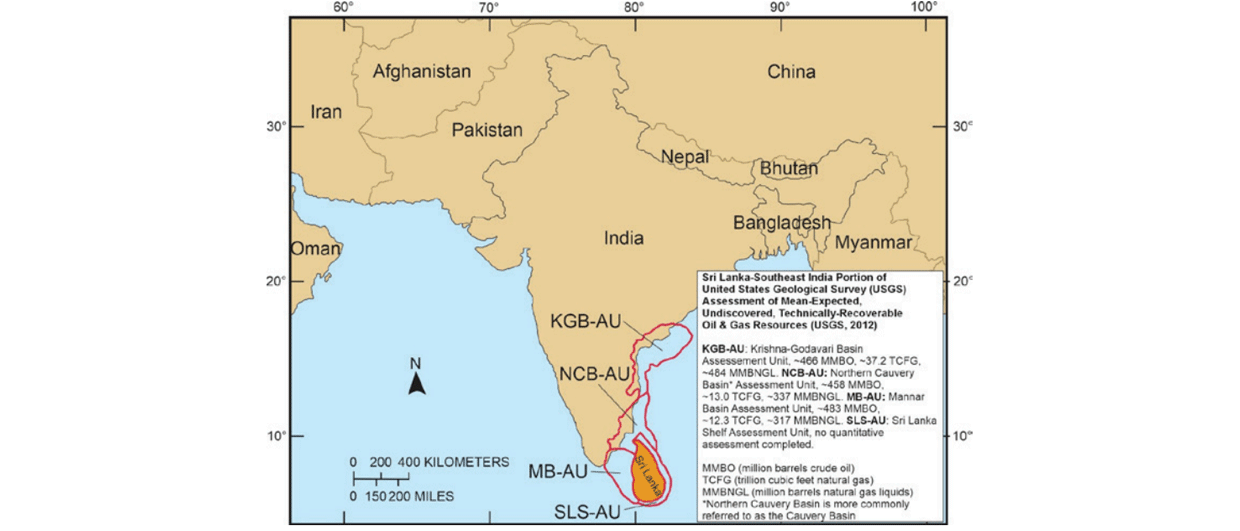Like many of the shale gas plays, the Eagle Ford Shale was originally known as a source rock, mainly for the Austin Chalk and other oil and gas bearing zones in South Texas. In common with other shale plays, advances in horizontal drilling technology and hydraulic fracturing have now made economic production possible from these horizons. What makes this shale play different is that it produces oil, condensate, gas and finally drier gas as drilling proceeds down dip.
The Upper Cretaceous Eagle Ford Shale crops out near the town of Eagle Ford, Texas (incorporated into Dallas in 1956) and dips steadily south to over 4,500m deep along the flanks of the San Marcos arch. The carbonate content (up to 70% calcite) of the shale makes it very brittle and easily fractured during stimulation treatments, resulting in impressive production figures of both oil and gas. Many wells are producing over 6 MMcfg (170,000 m³g) and 500 bo (80 m³o) per day. In a news release, Petrohawk Energy reported “930 bopd and 2.7 MMcfgpd on a restricted 12/64 inch choke” for one of their discovery wells. EOG Resources has reported production from some Eagle Ford wells exceeding 1,000 bopd (160 m³opd).
Big changes for South Texas
Hundreds of thousands of acres are being leased across South Texas, from the Mexican border in the southwest to Louisiana to the northeast, and several hundred wells are currently permitted. Shale plays, like the Barnett near Dallas, have led to huge economic growth with record numbers of jobs being created and payments of billions in royalties. While South Texas is much more sparsely populated, the two plays may be similar in size and the effects for the South Texas economy will be impressive.
Past discoveries have been in relatively small, scattered fields, while this play underlies most of Southeast Texas. It is essentially a massive, nearly continuous oil and gas field. Petrohawk Energy is one of the primary lease holders and their vice president, Richard Stoneburner, reported for one of their key areas, “The gas-in-place numbers are so exceptional because the shale is some 250 feet (76m) thick over a 50 by 25 mile (40 by 80 km) swath and is 100% net pay.” The play could easily be many times bigger in size.
Mr. Tucker Hentz, an active Eagle Ford researcher with the Bureau of Economic Geology at The University of Texas at Austin, says “The Eagle Ford started out like the other shale plays, concentrating on the gas potential of a prominent, widespread shale formation. Oil production from the shale in the Maverick basin area has led us to start looking at the depth, thickness, and rock characteristics of the unit across its subsurface area of occurrence. This will give a first approximation of the potential gas-producing areas.”
Mr. Hentz continues “While the play is still fairly early in the evaluation phase, we can say it potentially extends at least 640 km north-east from the Texas-Mexico border in the Maverick basin to the East Texas basin and is about 80 km wide. The unit’s down-dip extent beyond the shelf margin is only beginning to be examined. The shale varies in thickness from about 200m in the Maverick basin to 140m in the East Texas basin. However, the shale thins markedly toward and over the crest of the San Marcos arch and pinches out against the Sabine uplift.”
Huge potential
The list of companies leasing and drilling across South Texas continues to grow. Petrohawk Energy, Pioneer Resources, EOG, and Conoco-Phillips each have over 1,214,000 km2 (300,000 acres) leased. Australian companies like Antares Energy and Texon Petroleum are also drilling Eagle Ford wells. The potential well locations are in the tens of thousands.
EOG has drilled 16 delineation wells over a 193 km (120 mile) trend. They estimate the reserve potential of their over 2 million km2 (505,000 acre) position to be about 900 MMboe, net after royalty. They also report production curves to extend over 20 years. With infill drilling, this oil boom could last decades and possibly be one of the largest U.S. oil fields ever found.





